How to Start a Footwear Retail Store Business in India in 2024?
February 23, 2024
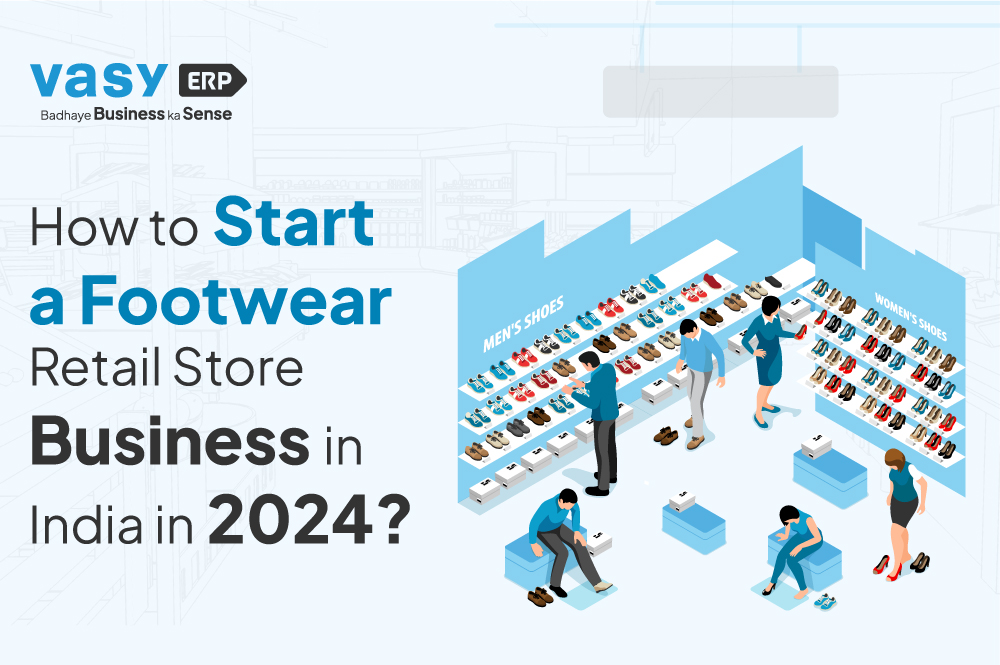
If you are looking for the right strategy on how to start a footwear retail store business in India, this article is for you. We have laid down all checklists, steps, and guidelines to start and run a profitable footwear store business.
From the business plan and key legal registration requirements to the location, inventory, equipment, and footwear software needed for a footwear retail business, this post covers everything you will need to start, manage, and scale your footwear business.
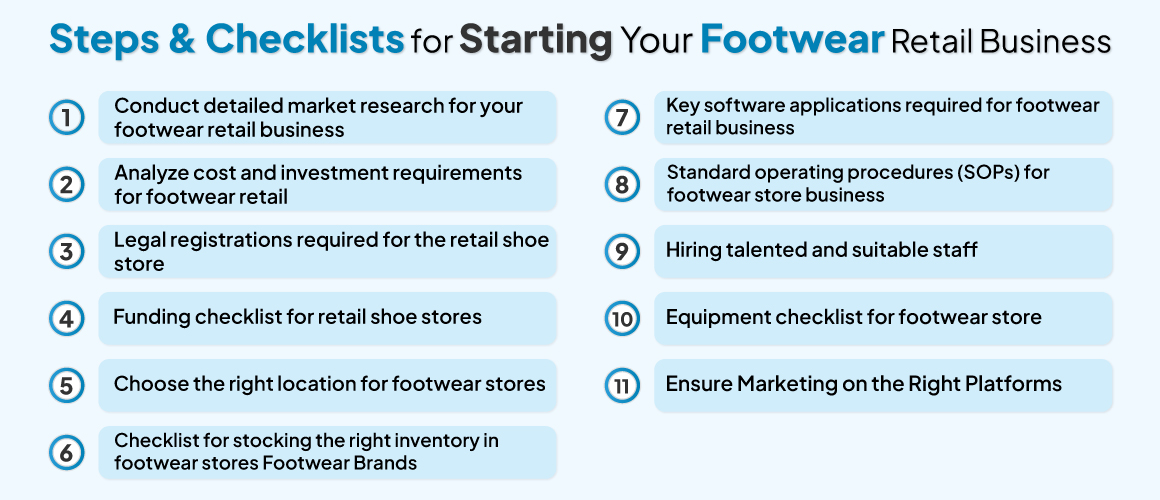
Did you know that India’s shoe market is booming?
The recent budget 2024 has laid the ground for a booming footwear sector ahead in India. ‘‘Positivity has been delivered in the mood’’, –Anupam Bansal, Liberty Shoes (Source)
The Indian footwear retail market is expected to grow at a CAGR of 4.85% between the forecasted period of 2024-2028. This presents a golden opportunity for aspiring entrepreneurs like you to step into the market and tap into its immense potential. This growth is fueled by factors such as increasing disposable income, rising standards of the middle class, and evolving fashion trends.
However, even amidst such positivity, there are challenges that a new footwear store retailer is bound to face while venturing into the first store. From managing billing counters to inventory, from sales to taxes, and CRM to online stores, there is a lot to manage.
Therefore, a comprehensive checklist or guidelines can be instrumental in addressing the above-mentioned challenges in the footwear retail business. It can serve as a roadmap, guiding footwear retailers through the various aspects of setting up and growing their businesses.
To help footwear retailers establish and scale their business, we have developed a detailed checklist that covers the following key areas:
To initiate any business successfully, the first step is thorough market research. This involves understanding the local demand for footwear, identifying potential customers, and gauging competition.
GST Registration
Business Insurance
Business registration certificates:
Key documents that you will require for opening your footwear store are listed below:
To establish a footwear shop in India, you can either invest your savings or secure funding through investments from angel investors or venture capitalists, small business loans from banks, or personal savings.
If you are looking to seek funding from external sources then create a well-structured business plan outlining everything from location to revenue forecast for a minimum of 5 years.
Small Business Loans
Angel Investors
Venture Capitalists
Picking the right spot for your shoe store is important:
Location Considerations
Foot Traffic and Visibility
Layout Planning
After getting the money and picking a spot for your store, it’s time to fill up your store with trending footwear inventory. You have to keep stocks for both warehouse and in-store display.
Below is the detailed list of stocks footwear retailers should keep:
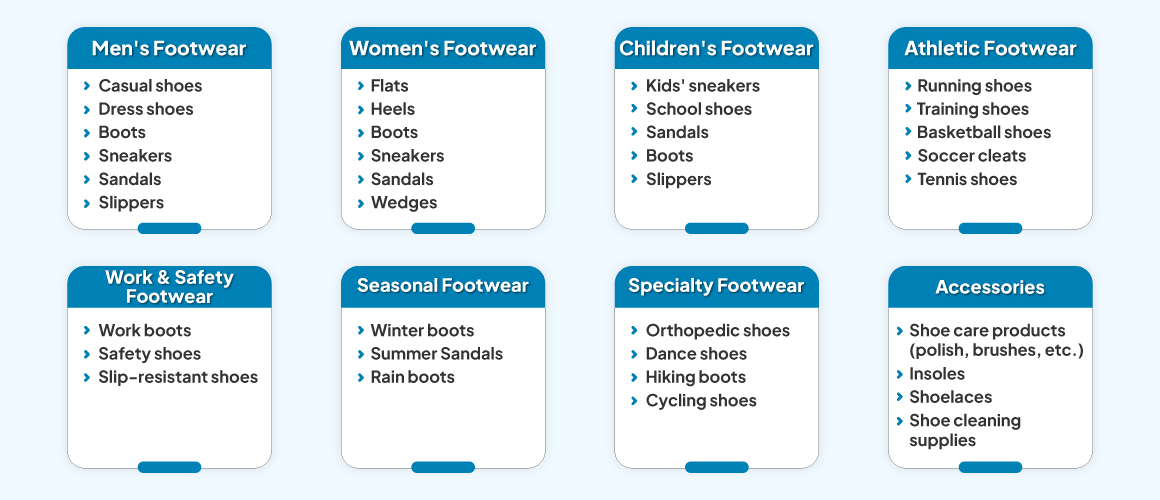
Footwear retailers must focus on top footwear brands for stocking inventory in their stores. For instance, in India, consumers prioritize value, quality, comfort, and durability, often seeking a mix of local and international brands such as Bata, Liberty, Campus, Paragon, Action, Hush Puppies, Aqualite, Ecosoft, Piere Cardin, and Gordie. Survey the trends, demographic requirements, offerings, pricing, and market strategies of these brands to stock the right mix of everything. You can also contact these brands for exclusive dealerships and offers.
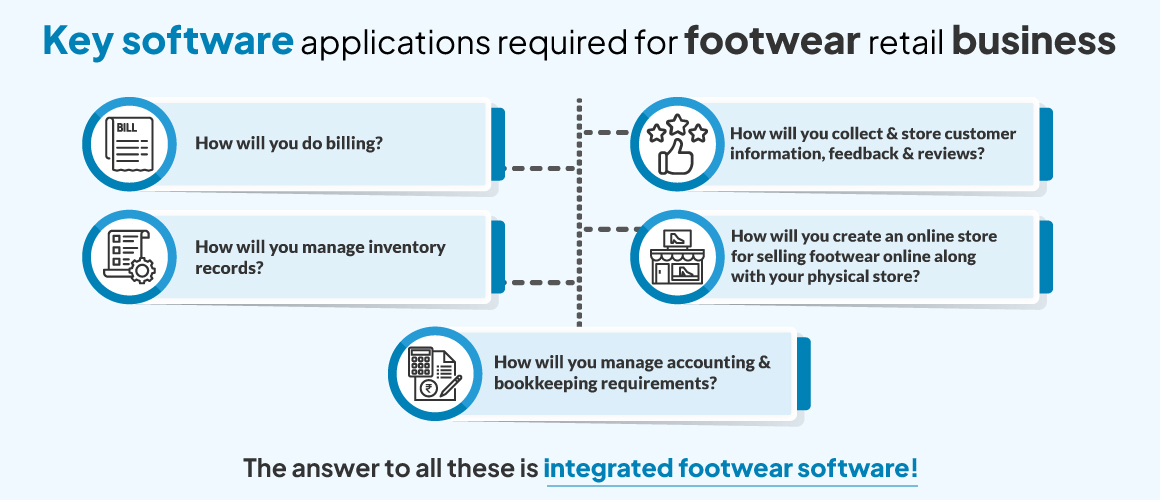
When choosing software applications for managing a footwear store, it’s crucial to consider various factors to ensure the seamless operation and sustainable growth of the business.
Here’s a comprehensive checklist to guide the selection of footwear software applications tailored for a shoe store:
Consider top all-in-one footwear software solutions like VasyERP to efficiently manage all operations of your footwear business.
Establishing and implementing Standard Operating Procedures (SOPs) is crucial for the smooth and efficient operation of a footwear store.
Here are the essential components of SOPs tailored for a footwear store business:
Inventory Management
Create detailed guidelines for retail inventory management including stocking, replenishing, and monitoring footwear inventory to prevent stockouts or overstock situations, including procedures for receiving new stock and conducting regular inventory audits.
Customer Service
Protocols for collecting customer info, delivering exceptional customer service, handling footwear inquiries, providing in-store assistance, staff training for customer reception and grievance handling, etc.
Safety and Hygiene
Adherence to protocols for maintaining a safe and hygienic environment, including floor safety measures, fire safety procedures, and cleanliness standards.
Cash Handling Procedures
Guidelines for accurate cash handling, cashier responsibilities, and processes for handling returns and exchanges.
Technology SOPs: Clear guidelines for managing barcode readers, footwear software, POS, security cameras, Kiosks, etc.
Marketing and Promotions
Strategies for planning and executing footwear marketing campaigns, in-store promotions, seasonal events, etc.
Warehouse and Logistics SOPs: Set process protocols for how your inventory at a warehouse will be delivered to the store location, how inventory will be stored in the warehouse and other processes for warehouse safety.
By implementing and adhering to these SOPs, a footwear store can ensure consistent operational standards and zero-waste resource management.
As your shoe store grows, hire help to handle daily tasks. Below is the checklist to hire and retain suitable staff for your footwear store.
Social Media: Create processes for utilizing popular social media platforms (Instagram, Facebook) to showcase the latest footwear products in your store, and run targeted ads to reach potential customers in the local area.
Print Ads: Collaborate with newspapers to place print ads or create attractive visuals of your footwear collection, and place such prints outside your store.
Banners: Strategically place eye-catching banners with the right message/captions at high-traffic locations in the vicinity of the store.
Promotions: Offer limited-time promotions such as ‘buy one, get one free’ on select footwear, exclusive loyalty programs, memberships, etc. to incentivize and encourage repeat visits.
Gift Vouchers: Introduce customizable gift vouchers that can be redeemed in-store. Offer a bonus gift or discount coupons to attract new customers.
Starting a footwear shop in India presents opportunities for growth and profitability. With our guidelines and checklists, you can ensure starting a footwear business with the right steps.
It is crucial to invest in modern technology such as cloud-based footwear software.
By adhering to this checklist and staying agile in response to market trends, you can set up a flourishing footwear business.

So you have started a retail garment/clothing store and...
April 12, 2024
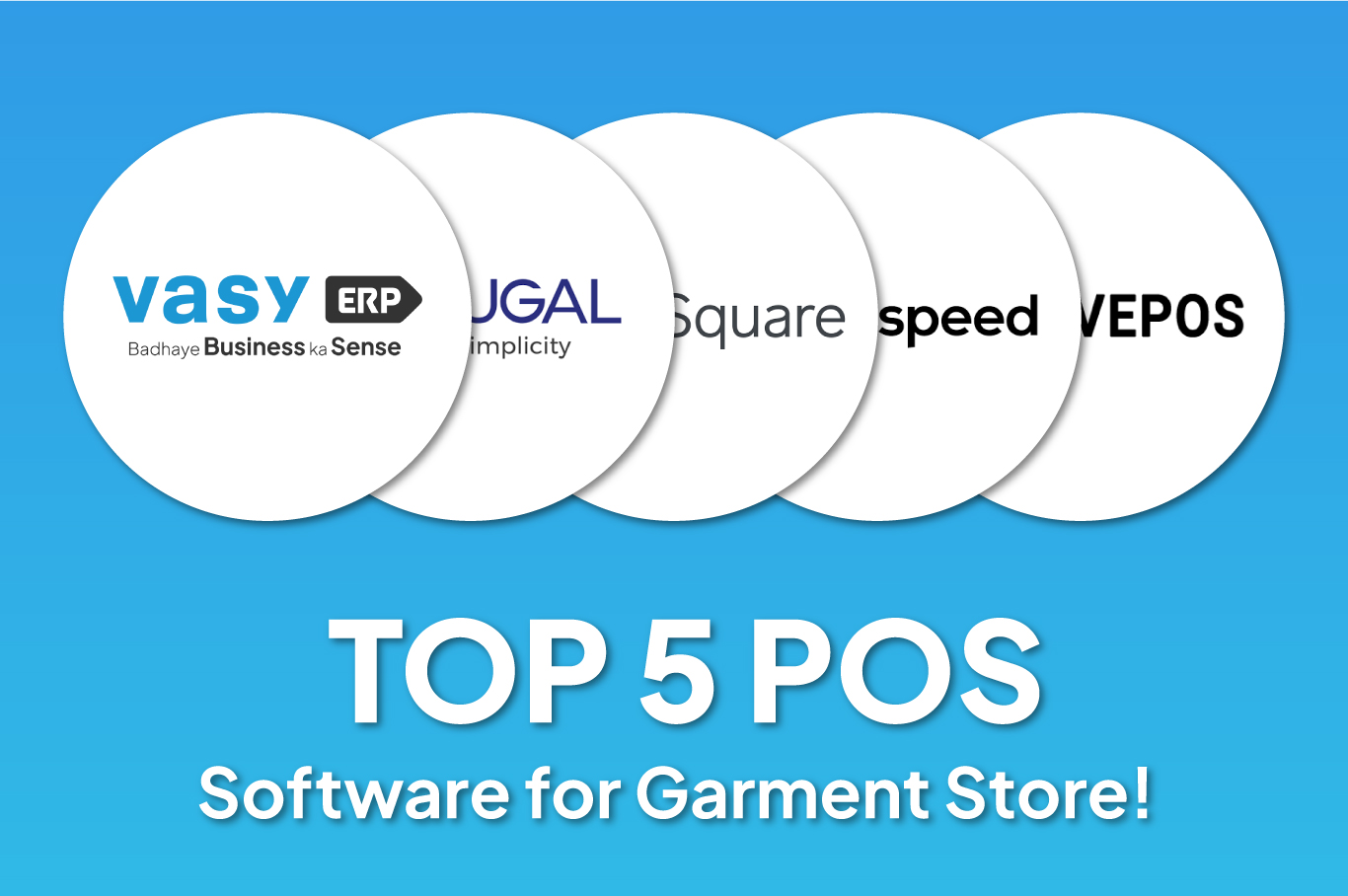
If managing billing, inventory, payment gateways, or ac...
September 13, 2023
